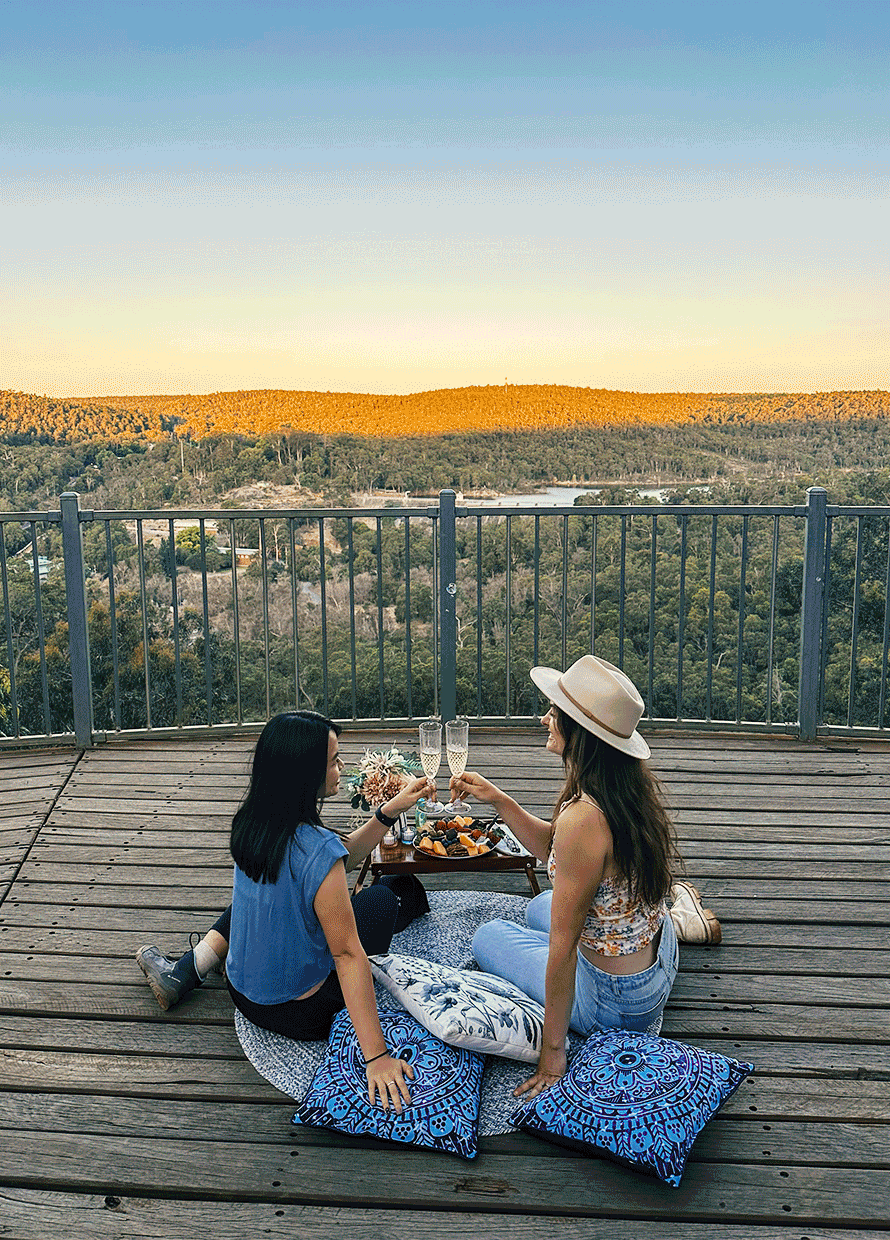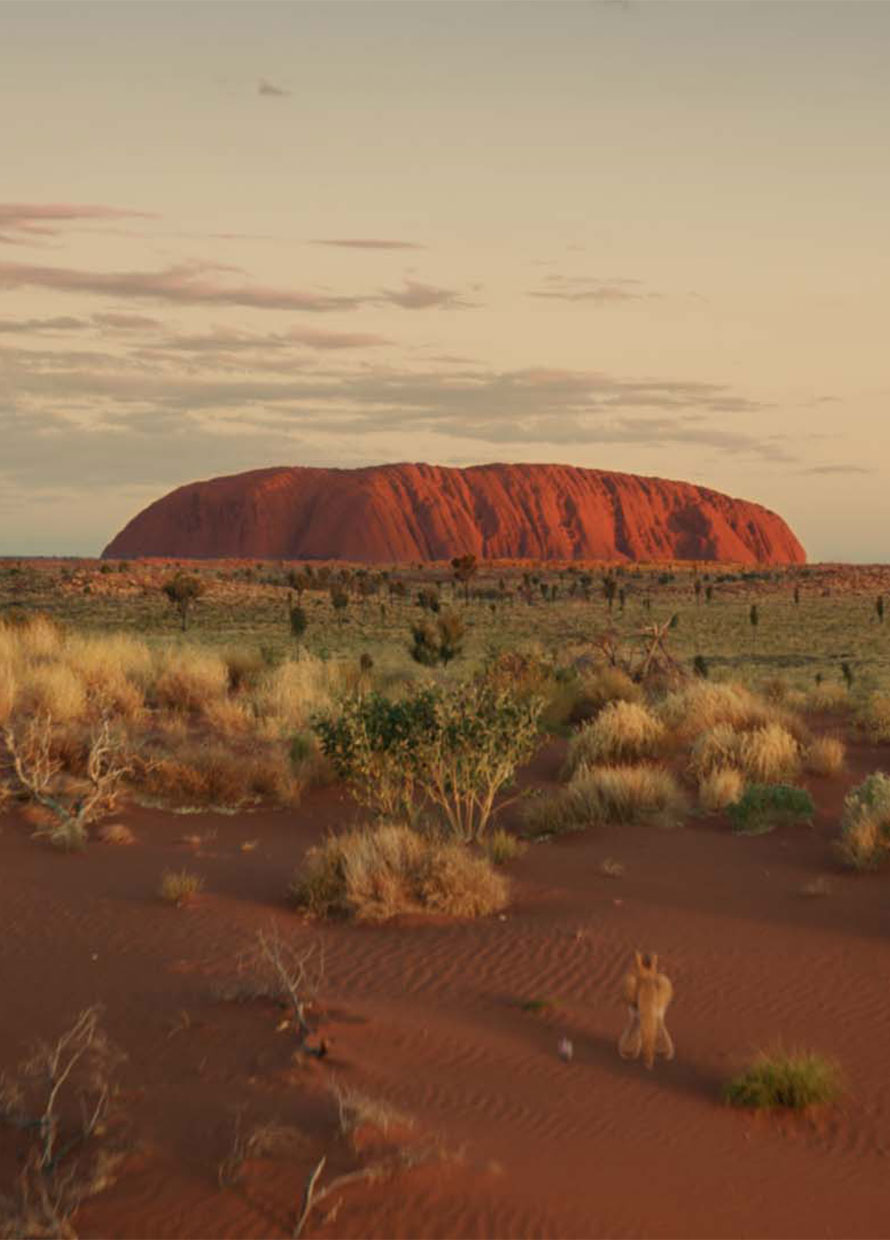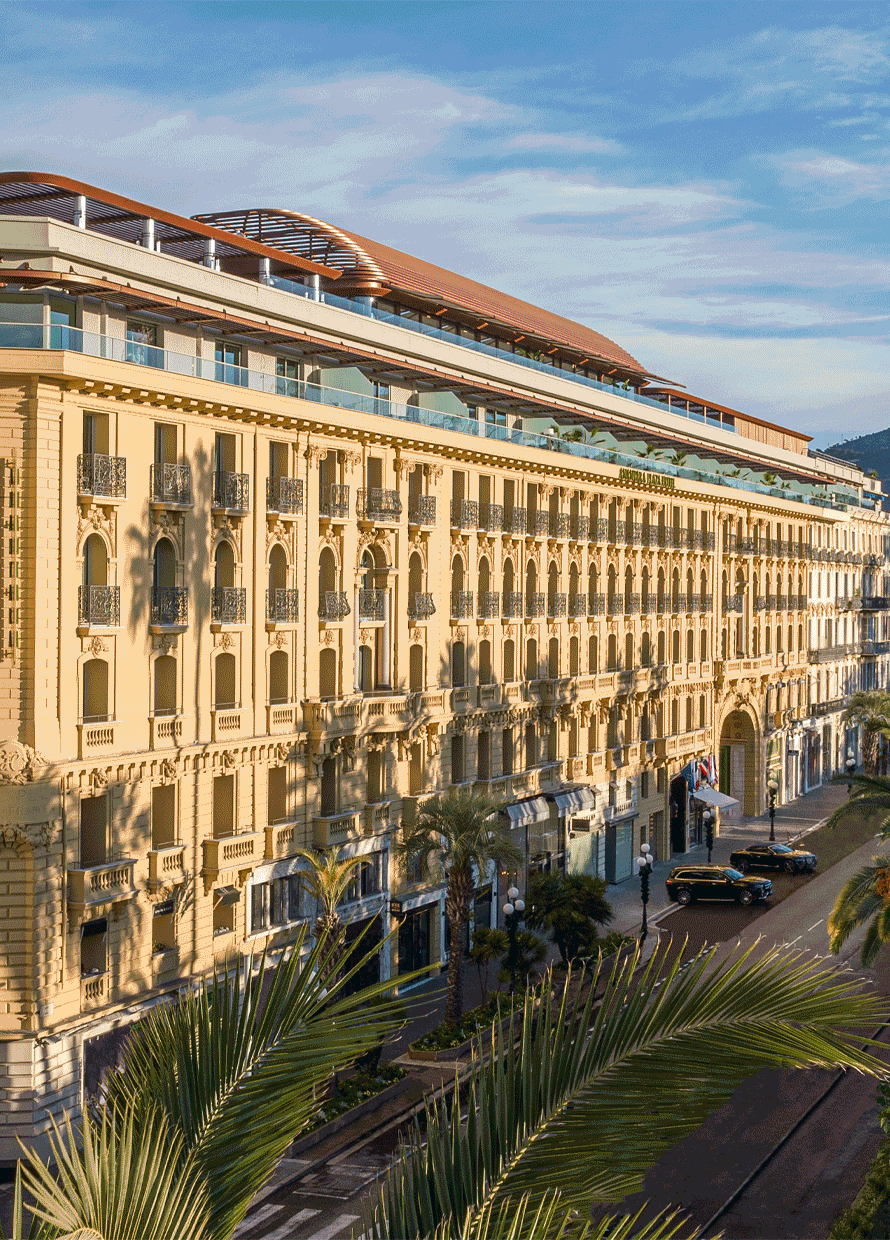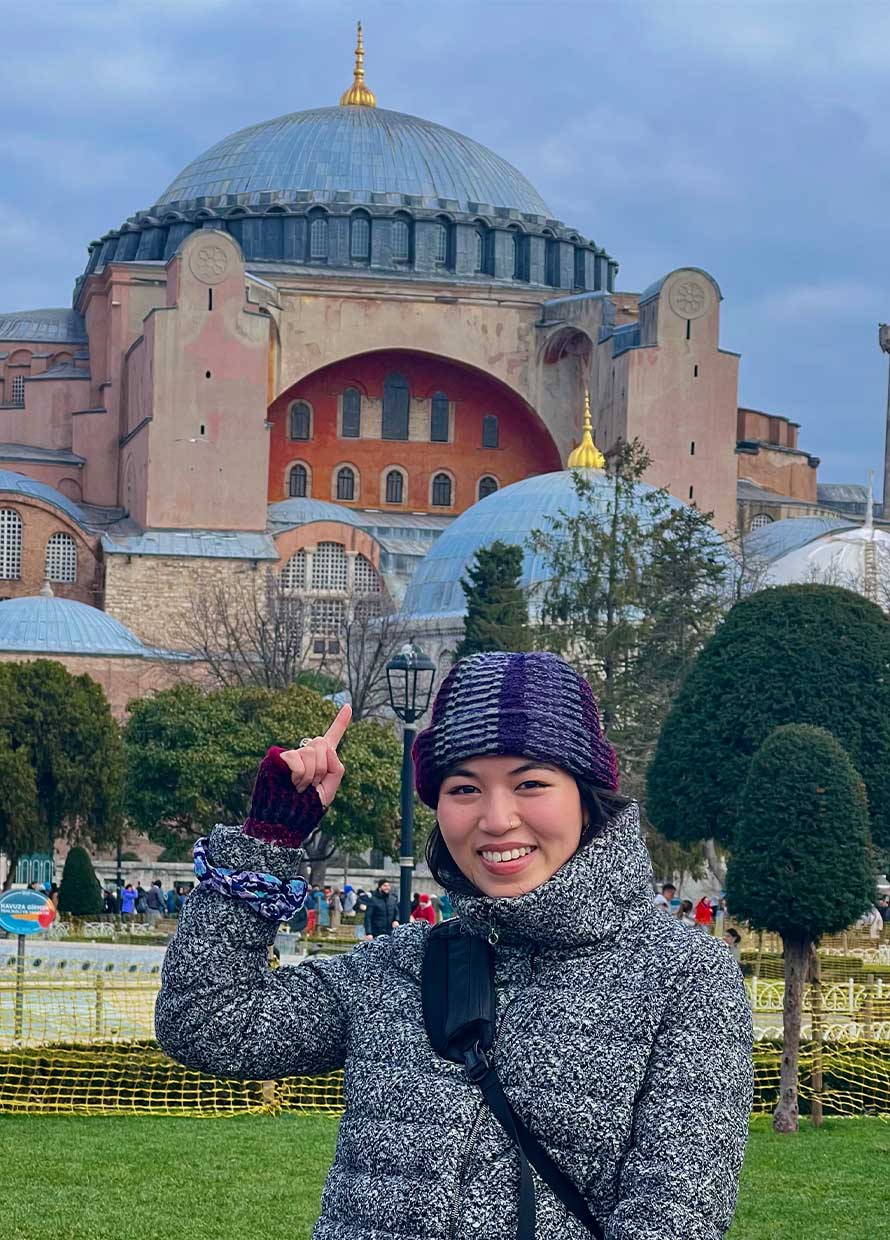In conversation with: World’s leading recycle artist Thomas Dambo on the Giants of Mandurah exhibition
Larger than life
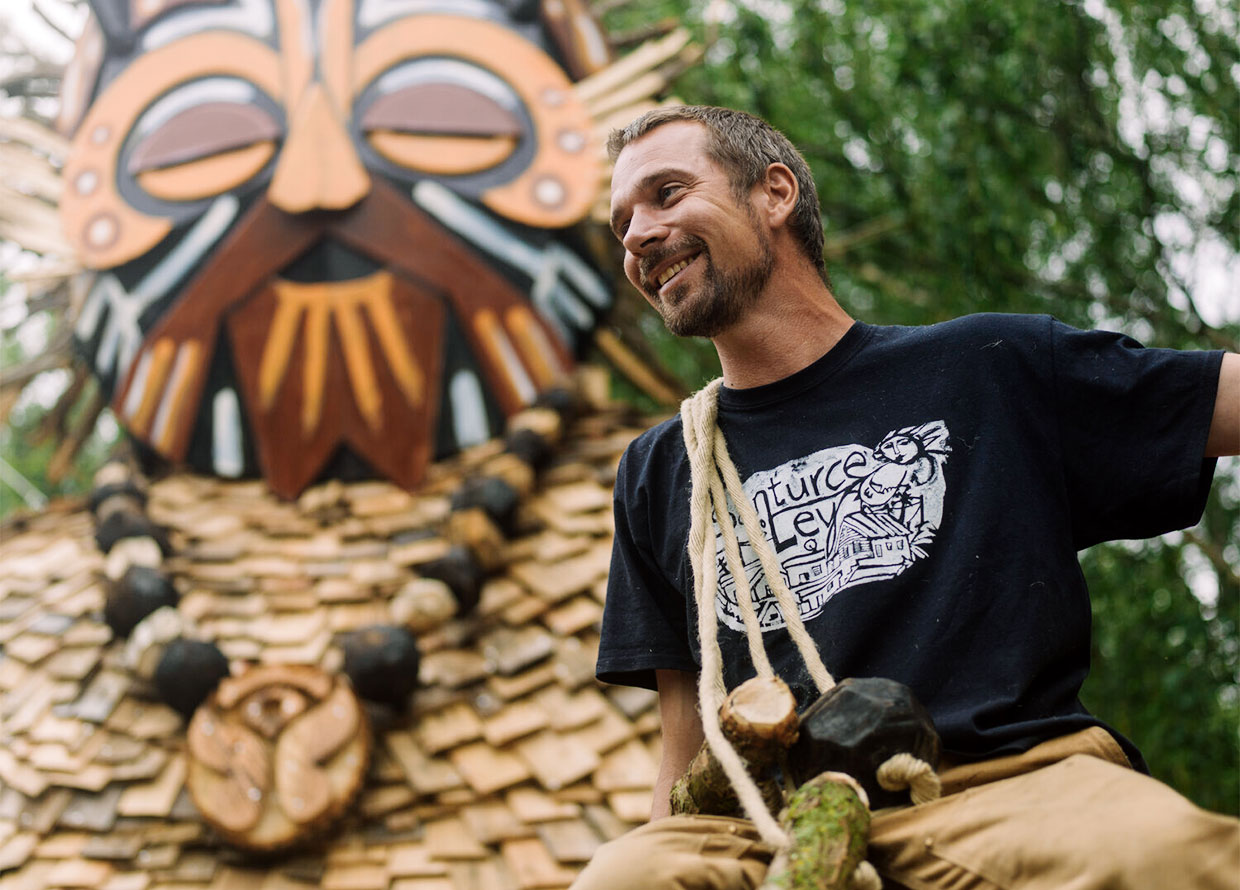
Last December, I had the pleasure of visiting Western Australia to discover the Giants of Mandurah—an outdoor exhibition by the world’s leading recycle artist, Thomas Dambo. Initiated and produced by WA-based art organisation FORM—Building A State of Creativity Inc., the Giants of Mandurah is free for the public to view from 12 November 2022 through to 12 November 2023.
This major cultural tourism project features five site-specific works across Mandurah and one in Subiaco, each roughly five metres tall. The sculptures are created to symbolise protectors of the environment and are placed in secret locations—determined by Dambo himself—to be discovered and explored.
View this post on Instagram
For context, Dambo is internationally renowned for creating larger-than-life sculptures (AKA giants, or trolls if you prefer) out of recycled and locally sourced materials. He has exhibited his works in various countries across the globe, including Denmark, USA, France, Germany, China, South Korea and Chile.
A few months after my trip, I got on a call to speak to the esteemed artist—who was in the middle of writing a book on his first 100 sculptures—about the installation that took years to put together amidst the pandemic. Ahead, Dambo dives into how he conceptualised the project, what makes it different from his previous works, and why you should definitely catch a flight to Western Australia to check out the giants.
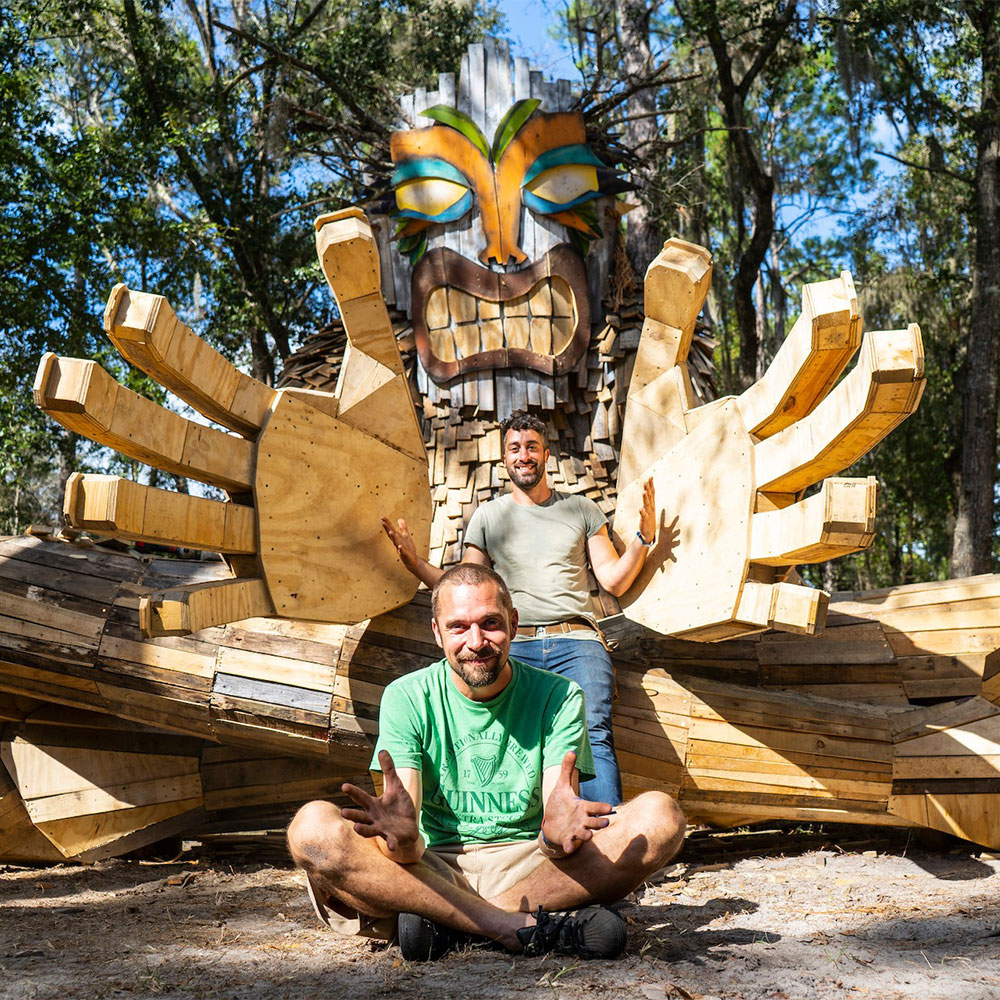
Hi, Thomas! Tell us briefly about the process of conceptualising the Giants of Mandurah.
My team and I went to Australia before Covid-19, back in February 2020. We were supposed to start the project that year but everything got postponed until September 2022. In the meantime, I had gotten two twin boys and they were only four weeks old when the project started. I had to send my team to start out first and then we flew down a few weeks later when the boys were able to move around a little bit more.
[FORM] asked me if we could have the themes of water, drought, and forest fires because there had been a lot of those in Western Australia; which inspired me to create the poem, the Rhythm of the Raindrops. I used to be a rapper for 10 years and made seven albums. I wrote a lot of hip hop lyrics, right, so the poem just flowed.
The five giants represent the different states of water, for example, there’s one for the wind and another for rain. I’ve always liked movies like Indiana Jones and I like fairytales, so I wanted to hide the giants in secret locations because I think it’s really fun. I also think if you gamify the exhibition a little bit, it’s good for capturing the younger generation because everything is like a computer game for them. So I used some of the same gaming techniques to bring them outside and explore nature.
If everyone just works on their computers in the city, they get so disconnected from nature. And if you don’t connect with nature, then you don’t understand why it’s important to protect it.
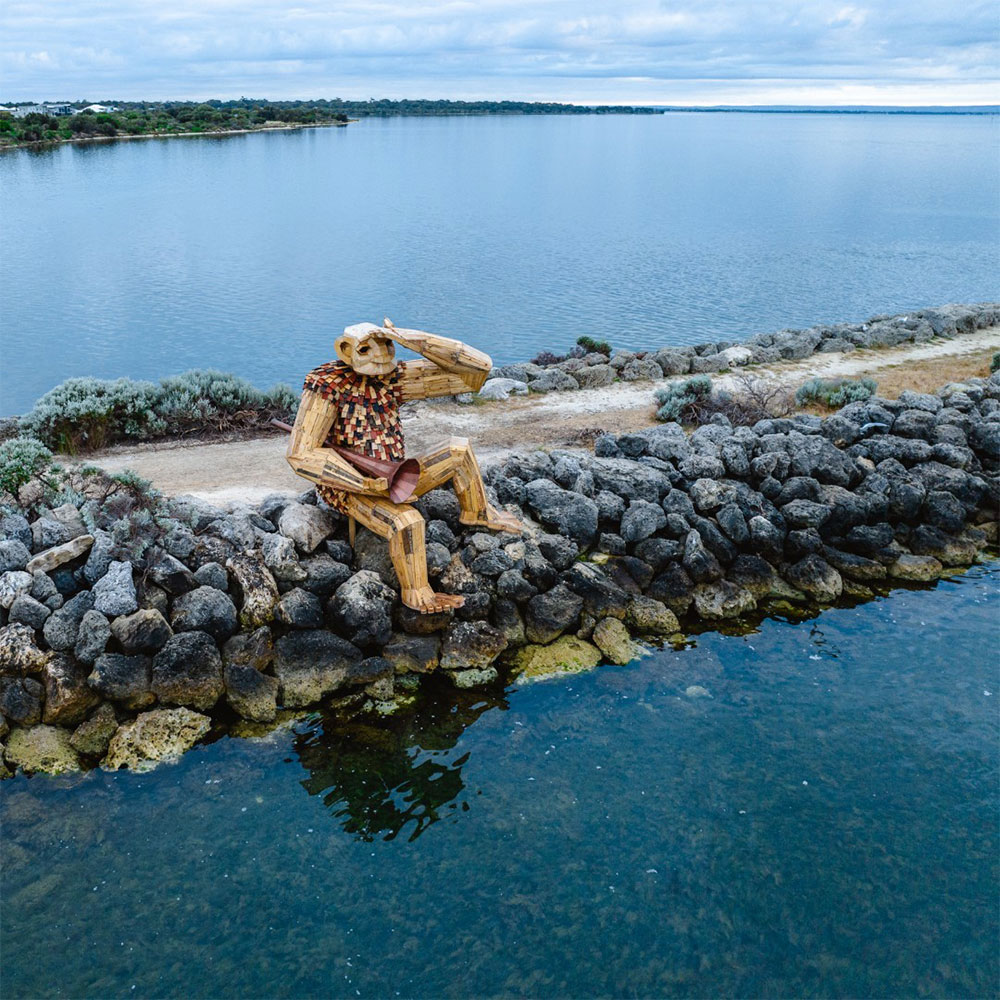
With so many elements involved in the whole project, how did you decide which comes first?
Ultimately, it starts with a topic—in this case, it was the poem. Then, I decided I wanted to do sculptures around the theme of water. After that, I would walk around to find locations that inspire me on what my sculptures should look like. Somewhere along the way, I decided that I wanted to gamify the whole process with the necklaces because I thought it could be fun. But it’s always my previous projects that inspire my current projects, and my current projects that inspire my next.
We hear that your sculptures are usually inspired by Nordic mythology, but the Giants of Mandurah incorporate elements of the local aboriginal culture. How did you mesh the two together?
I’m a white guy from Denmark so I’m not an expert on the local culture. But I had a lot of meetings with the aborigines and they shared some of their stories. Ultimately, I believe that I should not be the person telling their stories, so I told my story about water, recycling and preserving nature—and then I tried to source locally recycled woods and find seeds, pots and branches to make the necklaces for the giants. I also used local volunteers to help build the project, and that’s how we incorporated the local touches.
View this post on Instagram
How did you settle on each location of the giants? Was it just “a feeling” or were there certain factors of consideration for each spot to house a giant?
Of course, from the top-down, first, we need to have permission to build a sculpture at the location. We had to make sure there were no monuments, protected wildlife or special plants that would make it impossible to build around them. Secondly, the site has to have some type of infrastructure that is accessible to visitors. Either you’re able to drive there, or get there by bus or foot.
I also like the locations to be different—maybe there’s one on the mountain, and then another in the valley or by the ocean. A good fairytale holds different settings, so I always try to show people the different beautiful locations of the local environment for my exhibitions. Lastly, I try to find something in the landscape that tells a story—like the fallen tree by Little Lui, or a big hole in the ground, for example.
View this post on Instagram
What stood out while working on the Giants of Mandurah compared to other sculptures you’ve created around the world?
For me, coming from Denmark, the nature in Western Australia is really special. All the animals, trees and flowers look like they come out of a fairytale—I don’t really know if they’re dangerous and if I can touch them or eat them. This also gives my team a really good experience because while we were in Australia for two months to build the giants, we saw kangaroos jumping around and there was a big emu and a few snakes too. It was just a really beautiful place and I think that other people will also feel the same when they visit.
How did you collect the materials for the giants?
We mainly collected wooden pellets from a brewery in Perth for the giant’s body. For all the sculptures that have hair and beards, we collected branches from the forest. The materials for the heads, hands and feet are reused from old furniture from a Danish shopping chain called Flying Tiger Copenhagen and assembled in my studio in Denmark before we ship them over to Australia.
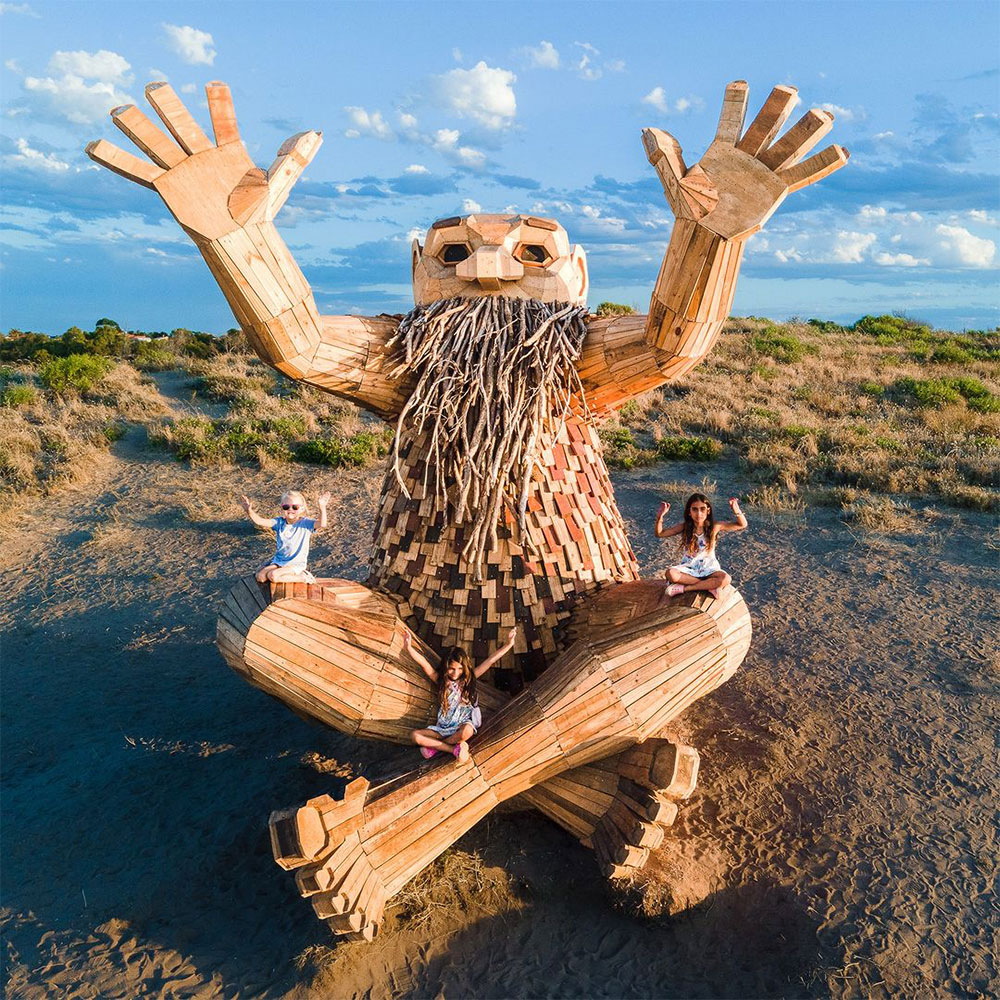
What was the biggest challenge you faced while creating the Giants of Mandurah?
The hardest thing was the day we had to move all the materials for the sculpture that sits up on the hill facing the ocean (Santi Ikto). We had to carry all the materials up the hill and we couldn’t drive there or use any machines [to transport them]. I think it took about one and a half days for six people and two wheelbarrows to move the materials and it was so, so hot that day—especially for someone coming from Denmark.
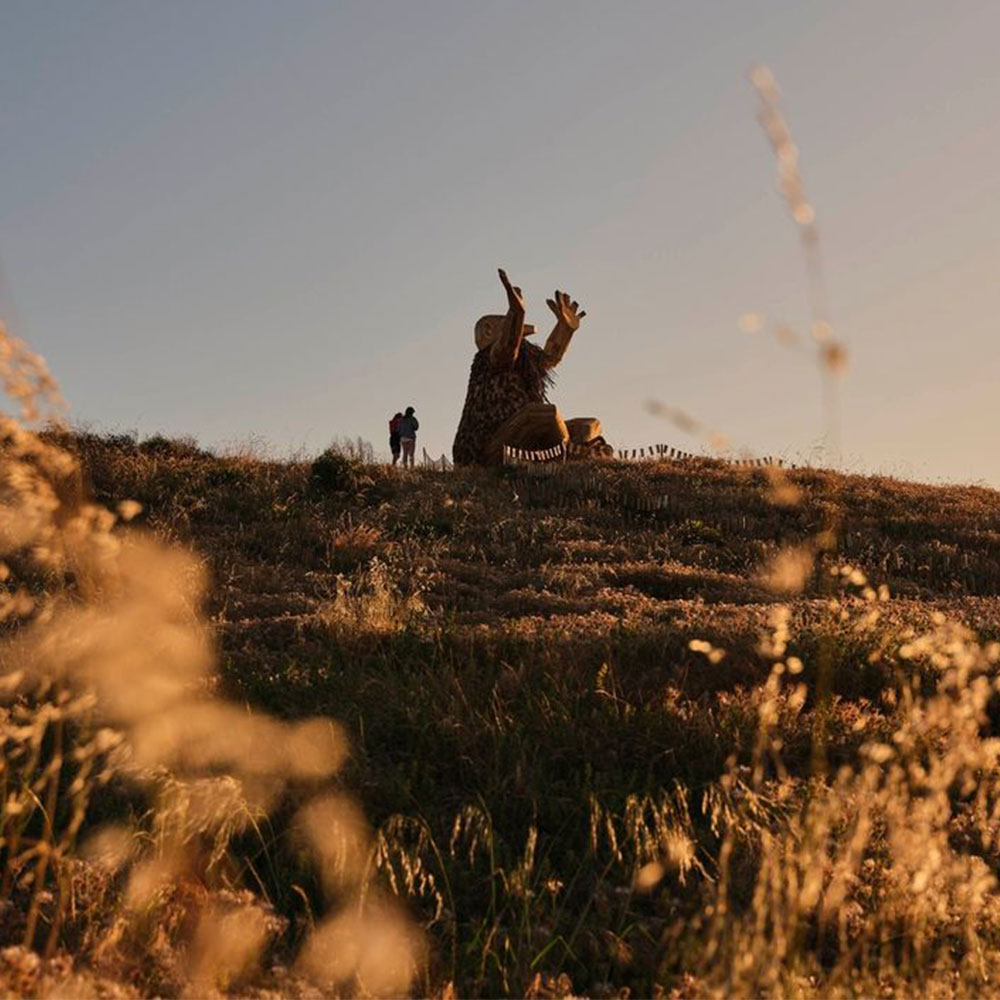
Which of the six giants took the longest to create and why?
All the giants take roughly 500 to 1,000 hours to build from scratch. Santi Ikto was the most complicated one because its hands are so high up and it’s sitting on that little sand dune. It’s also right by the ocean so it’s extremely exposed to the wind. We had to build it extra strong [to withstand the conditions]. I’d say that one probably took like 1,000 hours.
View this post on Instagram
What do you hope to achieve through your work with the Giants of Mandurah?
I hope that, first of all, it will give people a good outdoor experience and bring them out and away from their screens. Making an exhibition over a big area also gives people ideas of different locations to visit. I hope it will spark people’s imaginations and showcase the possibilities of recycled materials to create big installations that can attract thousands of people. The amount of visitors in Mandurah went up 400 per cent after we build the installation so I think that tells you something about the potential in our trash.
Our trash may suffocate and kill the world, but it also has the potential to make big and beautiful things and change the world. I hope the Giants of Mandurah really showcases that potential.
For more information about the Giants of Mandurah or to join the game, click here. Visit Thomas Dambo’s website, Facebook, Instagram or YouTube page for more updates on his future exhibitions.
Read more about Western Australia here.
| SHARE THE STORY | |
| Explore More |

